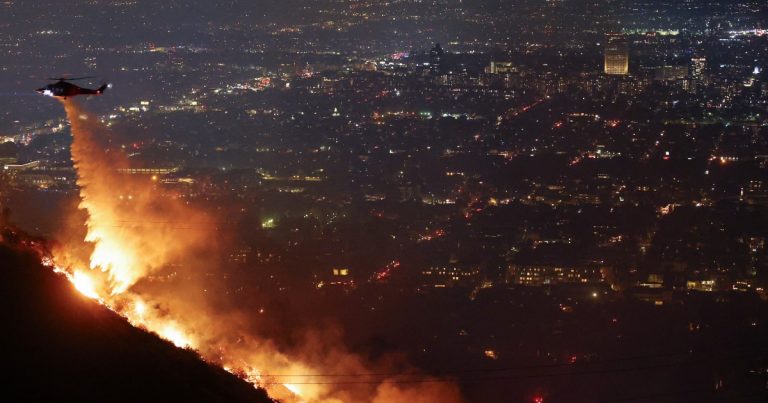Los Angeles Wildfires: A Case Study in Misinformation’s Spread
The devastating Los Angeles wildfires of January 2025, which tragically claimed at least 29 lives, not only ravaged the landscape but also ignited a firestorm of misinformation online. Full Fact, a fact-checking organization, found itself grappling with a deluge of false and misleading content related to the disaster, publishing 11 fact checks addressing everything from AI-generated imagery to miscaptioned videos originating from Chile. This incident serves as a stark reminder of the challenges posed by misinformation in the digital age and the crucial role of fact-checking organizations in combating its spread. The prevalence of manipulated content and the speed at which it disseminates online necessitate a critical approach to information consumption, particularly during crisis events.
One of the most striking trends observed during the LA wildfires was the proliferation of AI-generated misinformation. As news of the fires encroaching upon the iconic Hollywood sign spread, fabricated images of the landmark ablaze began circulating online. Despite assurances from the Hollywood Sign Trust that the sign remained unscathed, the false visuals gained significant traction. Full Fact debunked one such image, revealing the watermark of "Grok," Elon Musk’s xAI chatbot, subtly embedded within the picture. Similarly, fabricated images of "miracle houses," purportedly untouched by the surrounding inferno, emerged, often bearing the telltale Grok watermark or identified as AI-generated by Google’s reverse image search. This underscores the growing sophistication of AI tools and their potential for misuse in creating convincing yet entirely false depictions of reality.
Beyond AI-generated content, the spread of miscaptioned and out-of-context imagery further muddied the waters. A photograph depicting a burnt-out car juxtaposed against a seemingly unscathed tree and utility pole went viral, prompting speculation about the fire’s true cause. Fact-checkers, however, consulted experts who explained that this damage pattern is consistent with wildfire behavior. Cars and buildings, with their large, flat surfaces, are more susceptible to catching embers, while trees, due to their water content, are often more resilient. This case highlights the importance of seeking expert analysis and context before drawing conclusions from seemingly anomalous images.
The LA wildfires also saw the resurgence of old and geographically inaccurate footage. A video from a 2017 fire in Los Angeles was re-shared as if it depicted the current disaster. Furthermore, videos from Chile, including one of a firefighter battling a blaze and another showing a plane crash, were misrepresented as events unfolding in Los Angeles. This practice of repurposing existing footage underscores the ease with which misleading narratives can be constructed and disseminated, exploiting the emotional vulnerability of audiences during crises.
Adding to the complexity of the situation were entirely fabricated claims. One video falsely asserted that a multimillion-dollar home belonging to German Chancellor Olaf Scholz had been destroyed in the fires. Fact-checkers quickly debunked this claim, revealing that the depicted property was an LAPD police academy and that Mr. Scholz owns no property in the United States. Such blatant falsehoods highlight the importance of verifying information from reputable sources and exercising caution before accepting sensational claims at face value.
The proliferation of misinformation during the LA wildfires underscores the urgent need for media literacy and critical thinking skills. As AI technology advances, distinguishing real from fabricated content becomes increasingly challenging. Fact-checking organizations play a vital role in debunking false narratives, but individuals also bear responsibility for scrutinizing the information they consume and share. Employing tools like reverse image search, verifying sources, and seeking expert analysis can help individuals navigate the complex information landscape and avoid contributing to the spread of misinformation.
The LA wildfires serve as a stark reminder of the evolving nature of misinformation and the need for constant vigilance. As technology continues to advance, so too will the methods used to create and disseminate false narratives. Developing a critical eye, seeking out reliable information sources, and supporting the work of fact-checking organizations are essential steps in combating the spread of misinformation and fostering a more informed and resilient society. The lessons learned from the LA wildfires should serve as a catalyst for improved media literacy education and greater awareness of the manipulative potential of online content.


